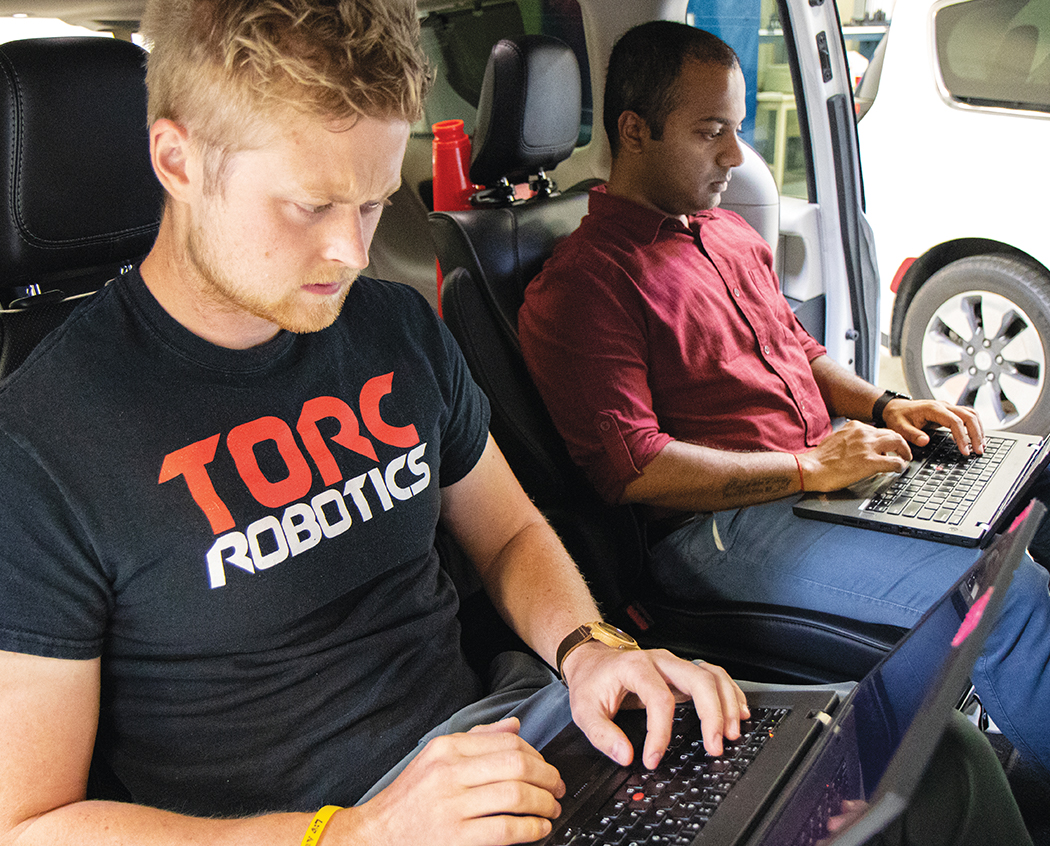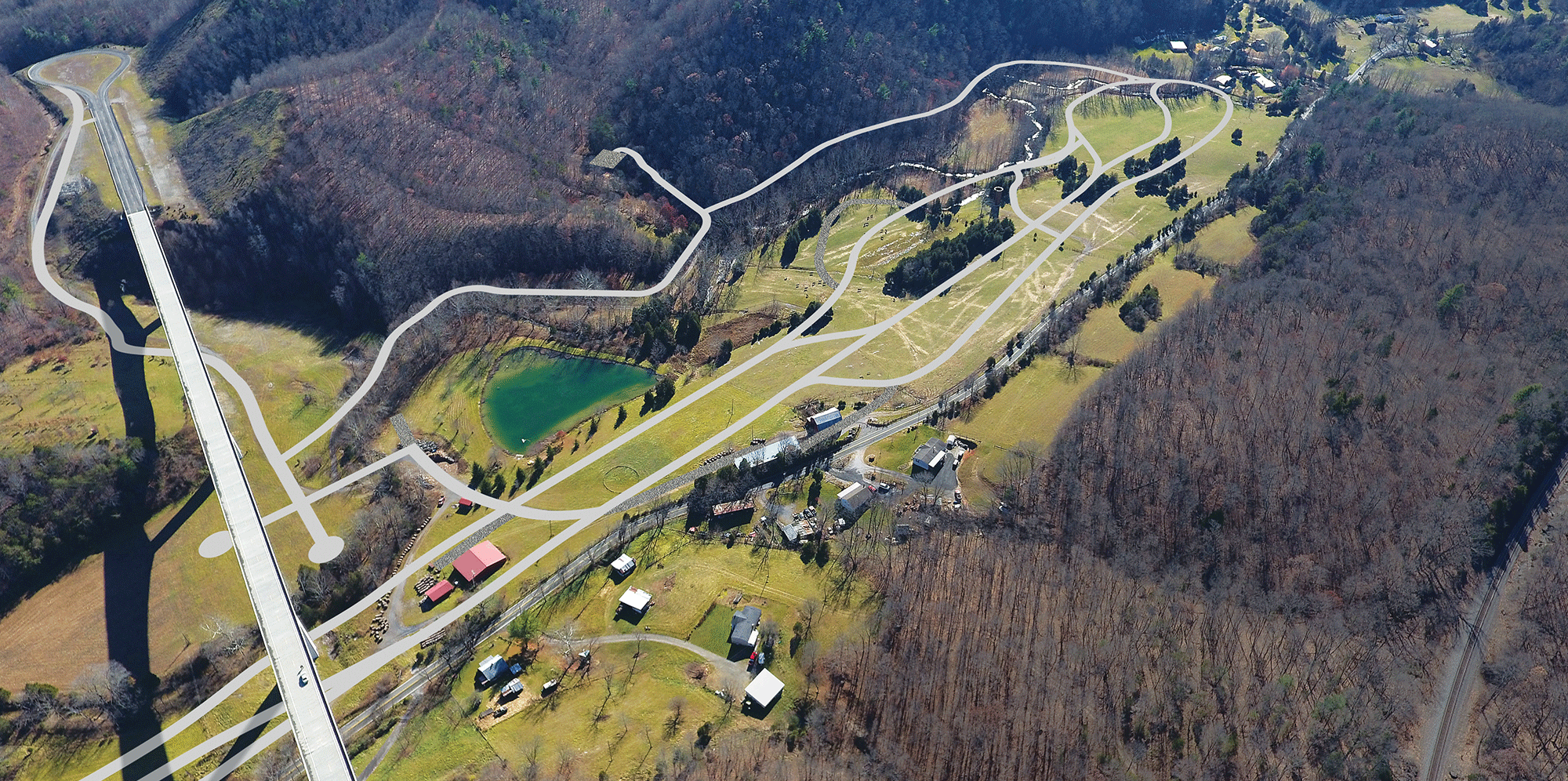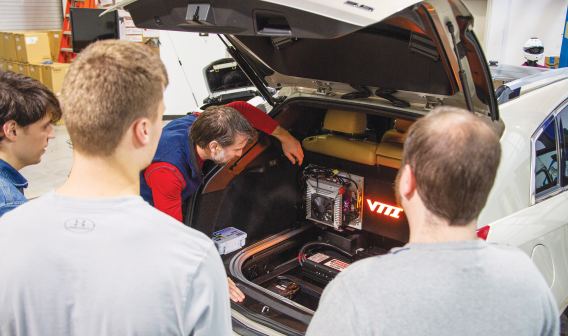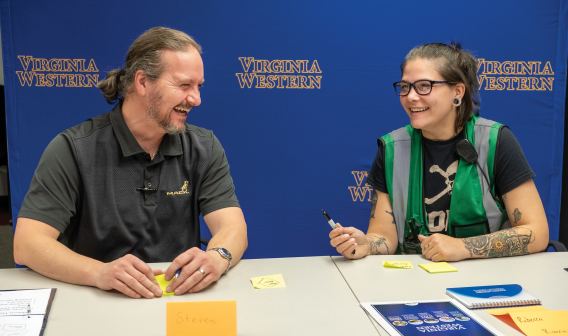Autonomous Vehicle Companies Build Foundation of Trust
When Andy Schaudt addresses an audience, he typically asks how many of them have ever ridden in an automated vehicle. At best, a smattering of hands reach skyward. He then recasts the question: How many have ever used cruise control in their cars?
“Everybody raises their hands,” said Schaudt, program director for the Center for Automated Vehicle Systems at the Virginia Tech Transportation Institute (VTTI).
Schaudt would then tell his audience that cruise control is indeed a form of automation — and that engineers, researchers, and the industry have been conducting research into it, and similar applications, for the better part of 40 years.
The two responses arguably illustrate both the present state of robotic technology and the public’s understanding of what it can and cannot do.
“It leads to a discussion that we’re using all of these terms interchangeably, and we really don’t understand what they mean,” Schaudt said. “The key is that automated vehicles today are not completely taking the driver out of the loop, so they are not fully ‘self-driving’ in that sense.”
As the nation is well on the path of coming to grips with the emergence of unmanned technology, Virginia is assuming a significant place in the progression. This likewise entails careful assessments, each step of the way, of the capabilities as they emerge into practicable use among the general populace.
VTTI, the second-largest university-level transportation institute in the United States with 560 employees, leads much of Virginia’s research into understanding what automation can do. The Virginia Connected Corridors, encompassing the Virginia Smart Road at Virginia Tech, Virginia International Raceway, and the Northern Virginia Test Bed in Fairfax County (including sections of Interstate 66, Interstate 495, U.S. 29, and U.S. 50), allows developers to test their applications on roadside infrastructure to minimize delays in demonstration and deployment. VTTI’s Center for Automated Vehicle Systems conducts research to determine the safety and usability of driver assistance systems as well as fully autonomous systems.
We do not compromise on the safety side of things... We will deploy self-driving trucks, without anyone in the cab, when it's safe.
Exactly when the sight of autonomous vehicles on the Commonwealth’s roads and in the skies will become as ubiquitous as, say, operator-free passenger elevators is anybody’s guess. Experts agree on one point: It won’t happen until such systems are completely safe. As of today, they are not — not yet, anyway. When that day comes, the same experts see Virginia at the forefront of the enterprise.
“Virginia has been one of the leaders among all the states across the country when it comes to automated vehicles,” said Tom McMahon, senior vice president of advocacy and government relations with the Arlington-based Association for Unmanned Vehicle Systems International (AUVSI), the world’s largest nonprofit organization dedicated to robotics.
“The technology is here. The issue is getting to regulations that permit [unmanned systems] operations on the roads and highways,” McMahon said. “These regulations are still being worked on.”
Equally important, McMahon believes, is upgrading existing infrastructure to accommodate driverless cars and trucks. One key issue is the source of commands each autonomous system would receive and obey. Such prompts could come from radio controllers, or perhaps spectrum-related equipment akin to cellphone towers. This all still needs to be determined, he said.
The automobile industry is working on driverless automobiles and trucks — and other modes of transportation — that will operate more efficiently and safely than those operated by people, McMahon said.
“We still have 40,000 traffic fatalities in the United States every year, and a lot of those are caused by human error,” he said. “So, we’re looking for automated systems to be built into cars — to make them safer and therefore reduce [that] number.”
For the past decade, Blacksburg-based Torc Robotics has been doing just that. The company emerged from a series of competitions Torc CEO Michael Fleming and a group of teammates undertook while he was an engineering student at Virginia Tech. A group formed Torc to keep the team intact and build on the knowledge from the competitions. Torc teamed up with Virginia Tech for a milestone competition in 2007 conducted by the U.S. Defense Advanced Research Projects Agency (DARPA), that sought innovative solutions in urban situations. The ultimate goal was to develop driverless vehicles and place them in situations that otherwise would endanger human operated convoys. Fleming and his colleagues finished well enough in that DARPA Urban Challenge to garner attention from the U.S. Department of Defense, leading the team to continue their work as a private company.
Torc, now a subsidiary of Daimler Trucks AG, announced an $8.5 million expansion in August, dedicated to the construction of a new facility at the Virginia Tech Corporate Research Center Research Center that will create 350 new jobs.
“We own the IP [intellectual property], we have talent from the university, and we have interest from industry,” Fleming said. “We started chipping away at this crazy idea of commercialized self-driving technology. And today it’s pretty mainstream, but 13 years ago, it was considered science fiction.”
Torc, Fleming said, is probably one of the first organizations that has achieved success in commercializing self-driving technology. The company has since applied its technology to mining, and has had a decade-long relationship with construction equipment manufacturer Caterpillar.
“They have a fleet of self-driving trucks, without anyone in the cab, that are operating around the clock. We’ve been a key partner in making that happen,” he said.
The trucking industry is on the cusp of adapting autonomous operations, Fleming said, because the operating environment on highways is more structured and easier to negotiate than those of city streets. Now associated with Daimler Trucks, Torc has been testing autonomous vehicles since the relationship began last August.
Before these autonomous trucks make their debut on the nation’s interstates, Fleming said, a host of different technologies must come together in a fashion that balances performance, cost, and safety. The third item, safety, is of paramount importance.
“We do not compromise on the safety side of things,” Fleming said. “People often ask me when we are going to see self-driving trucks on the road. They’re looking for a particular date. That’s the wrong [approach]. We will deploy self-driving trucks, without anyone in the cab, when it’s safe. And we still have a lot of work to do.”
The New River Valley provides Torc with an ideal location to operate, Fleming believes, with a pool of talent willing to work hard, proximity to a major university, and a low cost of living, especially when compared to the Northeast or California’s Silicon Valley.
In Crozet in Albemarle County — also close to a major university, the University of Virginia — Perrone Robotics has chosen to focus on transforming existing vehicles into autonomous vehicles. In a successful three-month open-road trial in Albemarle County using a combination of sensors, cameras, radar, and maps, Perrone’s Autonomous Vehicle for Neighborhood Use successfully navigated vehicles, pedestrians, and bicycle traffic on routes through neighborhoods, downtown Crozet, and Crozet Park. It was the first fully autonomous shuttle to operate on public streets in Virginia, two years after the first American live-traffic test in Las Vegas.
While a human driver was on board, Perrone expects that autonomous shuttles will eventually be remotely operated. Perrone has also partnered with Ohio-based transportation company First Transit to trial a 19-person electric shuttle from electric vehicle manufacturer GreenPower for the city of Jacksonville, Fla.
“Technically, we’re going to be in a good place to deploy next year,” said Dave Hofert, chief marketing officer and vice president of sales for Perrone. “But we’ll need time for all of the different testing and regulations.”
Meanwhile, Schaudt and his colleagues have continued to pursue development of autonomous vehicles from an academic standpoint. Companies and computer technology have reached the point, he said, where they can process information fast enough, and there are a sufficient number of sensors so they can start making progress toward removing the human from the driver’s seat.
“That’s exciting for scientists and researchers like myself, because we understand that humans contribute a lot of the time to the faults and problems you see on the roadways,” Schaudt said.
Development of driverless vehicles, Schaudt said, is offering experts in human behavior the “first crack” at really reducing the number of human fatalities on the highways below where they are now.
Enhancement of quality of life also plays a role. Once vehicles are able to go out and perform tasks by themselves, people can “disengage,” Schaudt said, and regain “time in their life” that otherwise would be spent in traffic. The business model could undergo a tectonic shift as well, with car companies transforming from sellers of vehicles to providers of transportation services.
This all would still entail a shift of public perception toward driverless vehicles, Schaudt said. He cites research that shows only 11% to 12% of the population would be willing to get into a driverless car.
“That’s kind of to be expected,” Schaudt said. “I would really encourage people to at least try to be open, and experience [driverless transportation] only when it’s road ready.”
The overall experience would involve passengers getting into a car, sitting back as it accelerates to the speed limit, and riding as it takes them from one address to the next — uneventfully.
“Acceptance and trust of these systems on our roadways is going to be [a] huge hurdle to overcome,” Schaudt said.






